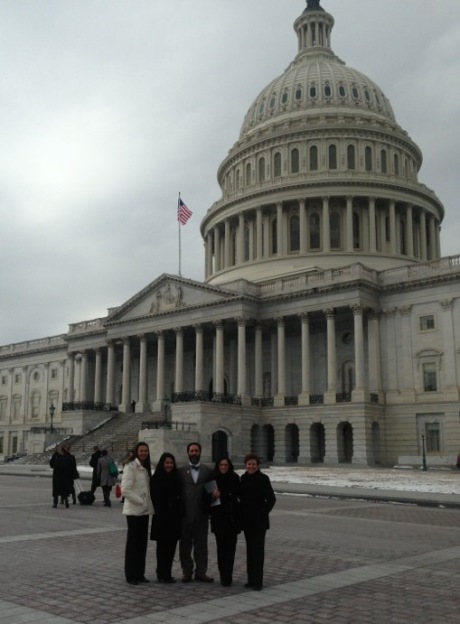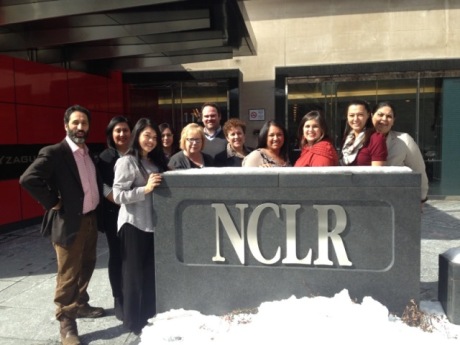ESSA Implications for Latinos and English Learners April 26, 2016
Posted by latinoschoolleaders in Education Policy.Tags: EL, ELL, English learners, ESSA, Every Student Succeeds Act
add a comment
By Dr. Christopher R. McBride, Mariposa Academy of Language and Learning
Latino students represent one of four students in classrooms across the United States and are projected to represent about one in three students by 2030. There are nearly five million English learner (EL) students and 80 percent of them are Spanish speakers. Furthermore, in 2013 only about 61 percent of EL students graduated high school compared to an average of about 75 percent of Hispanic students and over 86 percent of White students. Clearly our Latino and EL populations are growing and we, as a nation, are not meeting their educational needs. If we do not do a better job educating these students to prepare them to succeed in college and life afterward, we will all suffer.
Aware of the facts around Latino and EL students, the question weighing on the minds of many educational leaders is, “How will the new Every Student Succeeds Act (ESSA) impact our ability to close the achievement gap for Latinos and English learners?” The answer to this question is that it depends on the specific implementation in your state. ESSA has provided for increased funding for ELs by increasing Title III authorization levels. ESSA also leaves greater discretion to states to develop suitable accountability systems for when they are failing groups of students and has moved accountability for ELs from Title III to Title I. Therefore, it is critical to the success of Latinos and ELs students that states adopt provisions to better track and improve the educational performance of ELs.
Fortunately, ESSA requires that all schools must demonstrate that they are improving the English proficiency of ELs as English language proficiency is now a required indicator in every state’s school accountability system. This should encourage states to increase resources for ELs. Additionally, Title III will now require states to disaggregate ELs with a disability from the EL subgroup as well as report the number of ELs who have not attained English proficiency within five years of identification as an English learner.
So what can educational leaders do to help ensure that ESSA leads to the greatest possible achievement outcomes for Latino and EL students? Be at the table when your state is designing the accountability system to give your input on what are appropriate goals and indicators to help put every student on the path to college- and career-readiness. The accountability measures must include assessment performance, high school graduation rate, one or more additional academic indicators for elementary and middle school, language proficiency progress, and at least one other indicator of school quality or student success. What should the goals be? What should all of the indicators be and how much weight should they have? These are big questions. The answers and implementation in your state will have profound impacts on Latino and EL students.
I wish that I had the answers to all of these questions. The truth is, I don’t. What I do know, however, is that when local school leaders have input into answering these questions and designing the implementation, there is a much greater likelihood that Latino and EL students will graduate from high school college- and career-ready. As a school leader in Nevada, with a student population over 40% Latino and around 75,000 ELs, this is critical to the long-term well-being of our state.
Dr. Christopher R. McBride is the Director of Mariposa Academy of Language and Learning, a pre-K–5 charter school that has the mission to put every student on the pathway to graduate high school with a seal of biliteracy, prepared for college, and life success, in Reno, Nevada.
Speaking Truth to Power April 1, 2014
Posted by latinoschoolleaders in Education Policy.Tags: college and career readiness, Congress, education advocacy, George Miller, Lamar Alexander, Latino leadership, NCLB, No Child Left Behind, Tom Harkin
add a comment
By Angelica Solis, Director, Youth Policy Institute
 Our national leaders are charged with some heavy responsibilities: representing the community’s interest and ensuring that that representation reflects national policy. This is easier said than done. Competing community interests, disconnect between local realities and national perceptions, insufficient information about specific topic issues, and many other factors often challenge our leadership’s ability to develop policies that address the specific needs of Latino students and their families. For this reason, it is important that school and community leaders working directly with Latino communities actively engage policy makers around the issues that are vital to supporting the students and families they work with.
Our national leaders are charged with some heavy responsibilities: representing the community’s interest and ensuring that that representation reflects national policy. This is easier said than done. Competing community interests, disconnect between local realities and national perceptions, insufficient information about specific topic issues, and many other factors often challenge our leadership’s ability to develop policies that address the specific needs of Latino students and their families. For this reason, it is important that school and community leaders working directly with Latino communities actively engage policy makers around the issues that are vital to supporting the students and families they work with.
Informing and educating policy makers and their staff about important education issues such as NCLB waivers, college and career readiness standards, family engagement, and mental health, is critical to ensuring that Latino voices and experiences are not lost as our national legislators craft policies that will impact our community. Most importantly, having policy makers hear first hand the stories of how education policies play out locally, allows them to put faces to the issues and to contextualize the statistics and data that may or may not accurately capture the impacts of these policies in our communities.
On March 6, the current cohort of NCLR’s National Institute for Latino School Leaders (NILSL) had an opportunity to do just that – share their local stories, experiences and expertise around these and several other key issues impacting Latino students and families across the country. The NILSL fellows had the chance to meet with representatives from high-ranking legislative leaders such as Senator Tom Harkin (D-Iowa), Senator Lamar Alexander (R-Tenn.), Congressman George Miller (D-Calif.), and others, that are currently leading discourse and developing policies that impact our educators, schools, students and families. NILSL participants shared first-hand accounts of how their schools can use resources to support teacher development; how realignment of existing funds can impact a school’s ability to provide mental health resources to the child that has to overcome the traumas of living in a gang-infested neighborhood; and how developing clear accountability measures can ensure local schools are held accountable for erasing the achievement gap.
These were the stories the NILSL fellows carried with them as they walked the halls of Congress and met with the staff of the powerful leaders that will make decisions that impact their communities. Equipped with these stories as well as the hard facts and data related to the issue topics, the school and community leaders were unwavering in their commitment to the share the key recommendations that will ultimately lead to improved student outcomes, safe and healthy school environments, and improved community and family engagement.
Without the voices of local school and community leaders in Washington D.C., our leaders’ job of representing our Latino community interests will be difficult to fulfill, and it is in our best interest that they are successful at what they do so that our communities can be successful in return.

